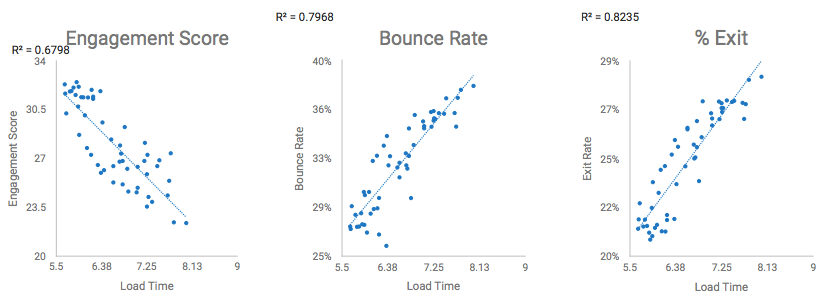What's New & Coming Down The Pike From Google For Performance Marketers?
Last Friday, we had the great privilege to attend the 2016, Google Partner’s Masterclass at the ANZ Viaduct Events Centre in Auckland. The annual event is designed as a platform for Google to share information about upcoming product roll-outs and important feature updates across key products. The Intensive, 6-hour event is a great opportunity for Google Partner Agencies to gain new insights and draw inspiration from a huge range of insightful case data. The event is also an opportunity for networking and connecting with members of the Google’s AdWords, Support Team.
Hosted by, Director of Digital Intelligence (Nick Iyengar) from Cardinal Path, the sessions were engaging and often very in-depth. Among the topics and case studies presented, highlights included an update on the ‘State of the Google Union’ and an overview of what advertisers can expect to see from Google in the coming months.
Key Google Updates
We’ve compiled a brief summary of just some of the key ‘take outs’ from the day - If you would like more information on any particular topic or wish to discuss how any of these items affect your online strategy, let us know and we’ll gladly arrange a discussion.
Page Load Times and The User Experience
We all know that this is super important... don’t we?
It’s is not entirely new information, that reducing your website’s page load times across devices is very important and should be a priority for brands looking to make the most form their investment in digital, but the case for doing this was really ‘hammered home’, with a presentation of some very compelling case data.
A recent study carried out by Cardinal Path, has clearly pointed to the strength of the relationship between page load speed and user engagement, and the very negative impact slow-loading content has on bounce rate and %exits. The findings presented, clearly illustrated a strong linear correlation between load times and website engagement scores, and an equally strong, but inverse correlation between load times, bounce rate and %exits. The differences in load time speeds needed to meaningfully affect these key website metrics, were being counted in fractions of seconds and very significant gains were to be made by shaving even a second of two off load times.
The ‘take out’ from the analysis was pretty clear – Invest heavily in optimizing your website code and content (particularly on key landing pages), to ensure page load times are super-fast and where the case supports it, consider Accelerated Mobile Pages (AMPs) for improved mobile performance.

Google AdWords - Expanded Text Ads (ETAs)
The biggest, recent change to Google AdWords has just happened, and if you’re not up with the change yet, you need to be! Google’s AdWord’s Expanded Text Ads (ETAs) are now here and they are here to stay – We’ve dedicated a whole article to Expanded Text Ads to cover what you need to know and have provided a brief summary below.
From 26 October 2016, you will no longer be able to create Standard AdWords Text Ads, meaning Expanded Text Ads will be the only option on the AdWords Search Network, so make sure you’re ready for the change. Currently, there also the added advantage for early adopters of the new ad format – because it is not used by majority of advertisers yet, so your ads will more likely to stand out from the competition.
Read the Expanded Text Ads article here.
Gmail Ads (formally GSP)
Promising reduced Cost Per Click ($CPC) and Cost Per Acquisition ($CPA), this highly targeted Google Display Ad format appear in Gmail user inboxes. This ad format provides opportunities for creativity with very precise (individual user-based) targeting abilities, allowing you to reach the exact audience, directly in their inbox. Gmail Ads are currently under-utilised by advertisers, resulting in a gap that you could be filling!
The final point to make on Gmail Ads is that the advertising platform only charges you for opens, not for impressions.
Paid vs. Organic: Cannibalisation Analysis.
The question here was whether search advertisers should be bidding on their own brand terms. For many, this seems counter-intuitive and some cost-conscious advertisers have taken the view that search users will browse or scroll down the SERPS to find their organic listing, if they’ve opted not to advertise on their own brand or product terms.
It’s been a long-established truism among AdWords Managers and Analysts in the circumstance that
“one plus one equals three” and that the relatively small investment associated with doing this, is far outweighed by the benefits. In addition to allowing your competitors to ‘pick off’ your brand-loyal customers at critical points on the path to conversion, Google’s Quality Score, will massively tip the balance, in favour of the named brand, providing them with significantly cheaper $CPCs than their competitors. The Google AdWords “Shake Up”, which took place in February this year, has in some cases, pushed organic search listings further down the page which in turn has served to make bidding on your own brand terms, an even more important AdWords tactic.
The very substantial and in-depth case data presented by Cardinal Path, helped put any doubts to rest, around this perennial question and brought a lot of quantitative analysis to bear on the issue. The exacting analysis revealed that by bidding on your brand terms, it’s likely that companies will see an uplift in total channel lift (combined Organic and Paid CTR), and in some circumstances will also see an uplift to Organic CTR. This of course depends on the Query and Key Terms being used, so experiments should be initiated by the business to establish the effect it has on your own brand.
AdWords and Display ‘Customer Match’ Targeting:
Traditionally, ‘cookie-based’ targeting was the only option for Advertisers to retarget a specific audience on the Google Platforms. This type of targeting doesn’t fully account for today’s user behavior, where most users will use multiple devices (e.g. phone, tablet, laptop) to complete online tasks, during the different stages of consideration and purchase. As a result, the new Customer Match tool can be used to more accurately target your existing customers, based on their Google email account.
The new ‘Customer Match’ was developed to target specific customer segments using an existing customer base. Businesses can also create ‘Similar Audiences’ that utilize Customer Match as the base to create a profile that emulates existing audiences to target new customers. E.g. A customer recently purchased a drink bottle from your sports company, but they may not be aware that your company also sells sports bags. Customer Match allows you to target this specific group of drink bottle purchasers, and advertise your sports bags specifically to them.
This new retargeting tool is a lot more accurate as it leverages super-rich, customer data to segment and target. A limitation of the tool is that Advertisers must have at least 1000 Google email accounts to initiate this style of campaign. If you’d like more information on how you can leverage this brand new tool, let us know.
The List Goes On…
Other big topic items covered on the day included:
- Content optimization strategy
- Newly introduced, Device-Specific Bid Adjustments
- AdWords Price Extensions
- Improvements around invalid click detection
- Accelerate Mobile Pages (AMP).
If you or your thinking about finding out more about any of the strategies and features covered here, please feel free to contact us and arrange a catch up.
 Jan 31, 2025
Jan 31, 2025



